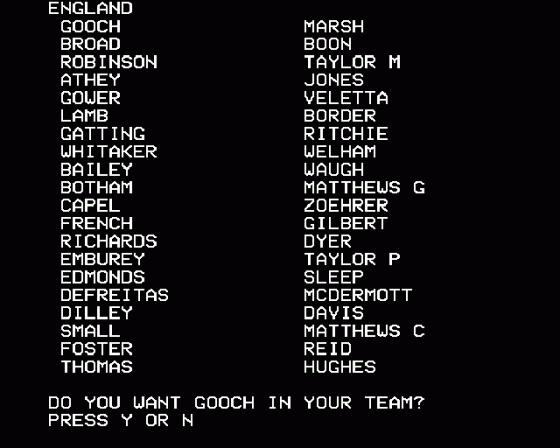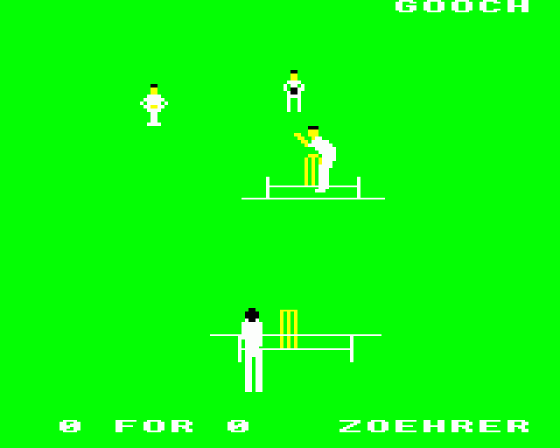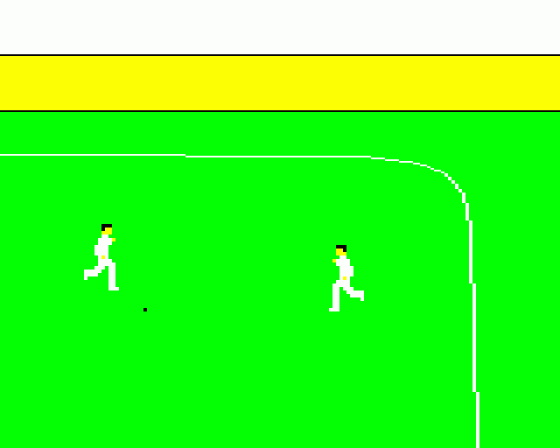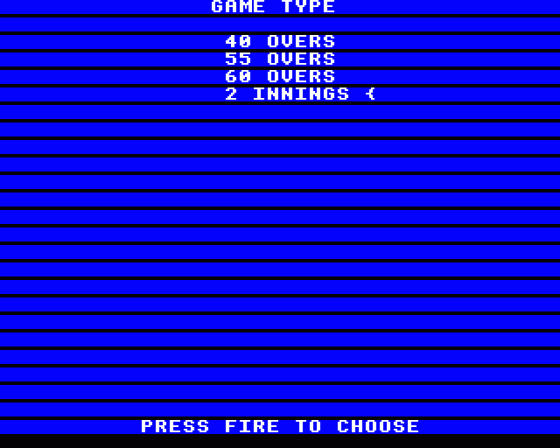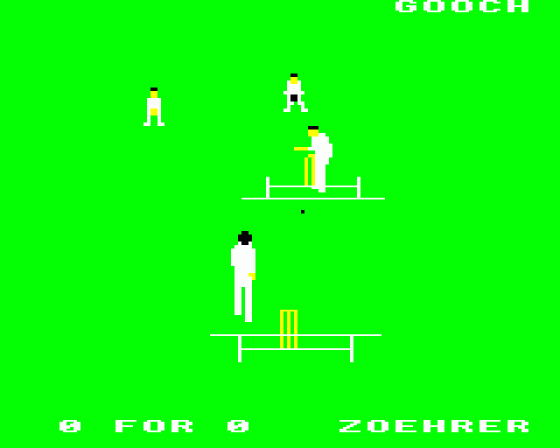Other Reviews Of Graham Gooch's Test Cricket For The BBC/Electron
Graham Gooch's Test Cricket (Audiogenic)
A review by Desmond (Electron User)
Graham Gooch's Test Cricket (Audiogenic)
A review by Dave Reeder (A&B Computing)
Graham Gooch's Test Cricket (Audiogenic)
A review by Richard Bellis (Acorn User)


 1st October 1987
1st October 1987

